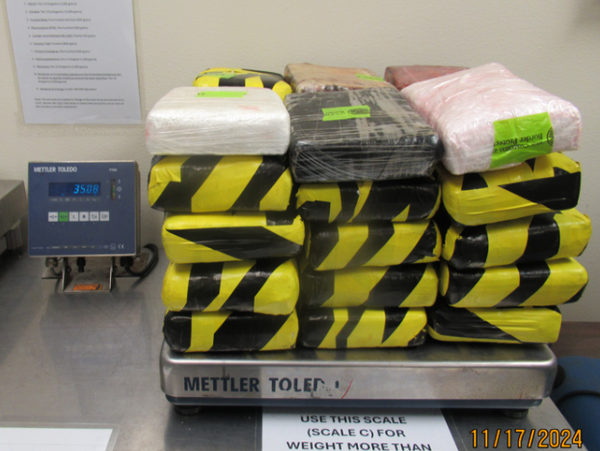
For more than a decade, Bitcoin (BTCUSD) has been promoted as “digital gold,” a hedge against inflation and an uncorrelated asset that could protect investors from systemic risks. But in recent years, a new and potentially dangerous trend has emerged: corporations and institutions are pouring billions of dollars into Bitcoin and crypto-related reserve strategies.
What began as a fringe idea embraced by a handful of bold firms — most notably MicroStrategy (MSTR), which recently rebranded as Strategy — has snowballed into a corporate movement. Treasury departments, funds, and even some banks are now holding Bitcoin on their balance sheets, betting that its scarcity and growing acceptance will make it a long-term store of value.
But this strategy introduces a new, underappreciated danger. If Bitcoin prices collapse, the fallout could ripple through corporate debt markets, investor confidence, and broader financial stability.
A Flywheel of Leverage and Risk
When companies add Bitcoin to their reserves, they don’t just buy coins with spare cash. In many cases, they finance their bets with debt issuance, convertible bonds, or leveraged strategies. This creates a flywheel effect: rising Bitcoin prices push up corporate valuations, making it easier to raise more debt, which in turn fuels further crypto accumulation.
But the reverse is also true. If Bitcoin falls sharply, balance sheets weaken. Debt tied to those assets can go underwater, forcing companies to liquidate holdings. This triggers more selling pressure in the crypto market, which further accelerates the downturn — a feedback loop that could resemble the cascading margin calls of the 2008 housing crisis.
Unlike real estate, however, Bitcoin and other cryptocurrencies are purely speculative assets with no cash flows or intrinsic earnings. They rely entirely on market confidence. That fragility means the system is vulnerable to violent swings.
Bitcoin poses even more risk than if gold itself were used as a reserve strategy, because gold is used in jewelry and electronics around the world. While it’s not a productive asset, gold (GCZ25) does have real-world utility. This is also why Bitcoin is subject to such wild swings. Whether it’s worth $100 or $1,000,000, there’s no backstop where a manufacturer might think, “This is just too cheap not to start buying.”
In 2020, when oil futures (CLU25) briefly inverted into negative territory during COVID-19, they did not stay there long because there are thousands of parties around the world that can turn oil into valuable products to then sell to consumers. If Bitcoin experienced a similar black swan event, it might not recover so easily.
The Beanie Baby Analogy
To understand the risk, imagine if Fortune 500 companies in the 1990s had plowed billions of dollars into Beanie Babies as their primary reserve asset. For a time, the plush toys were considered collectibles with skyrocketing value. But once the bubble popped, they became almost worthless overnight.
Bitcoin isn’t Beanie Babies — it has global liquidity, decentralized infrastructure, and a dedicated user base — but the analogy highlights the danger of tying critical corporate finances to a volatile, speculative market. As Bitcoin continues to appreciate in value, companies might take out debt backed by their Bitcoin, on top of the debt they used to purchase it. Their stock prices will continue to climb, and traders will continue to buy and leverage themselves with their growing net worth. Once the music stops, people will realize there’s no backstop and, as they do, will scramble to get what they can for their Bitcoin. As this activity hits the banks and institutions that gave out this money, things could get ugly.
If enough firms are exposed and the market cracks, we could see a wave of bankruptcies, debt defaults, and layoffs, not because of deteriorating business fundamentals, but because of misplaced treasury management.
Bitcoin Won’t Go to Zero, But It Can Still Break Companies
Most analysts agree Bitcoin is unlikely to collapse to zero. It has too much network adoption, infrastructure, and institutional support. But a 50–80% drawdown, which has happened multiple times in its history, would likely be catastrophic for companies using it as a reserve strategy.
A crash wouldn’t just hurt crypto-native firms; it could also impair traditional businesses that have adopted Bitcoin for treasury diversification. Debt obligations would remain fixed while the value of their reserves evaporated, pushing some into insolvency.
In short: Bitcoin’s survival doesn’t necessarily guarantee the survival of the companies betting heavily on it.
A Potential Systemic Crisis
What makes this a hyper-systemic risk is the scale and interconnectedness. As more corporations adopt crypto reserves, more institutional lenders, pension funds, and bondholders become indirectly exposed. A severe downturn could force widespread balance-sheet adjustments across sectors.
In effect, the same companies meant to represent stability in the financial system would be amplifying volatility. Just as mortgage-backed securities turned a housing downturn into a global crisis in 2008, a corporate Bitcoin reserve mania could transform a crypto crash into a corporate credit event.
The Double-Edged Sword of Corporate Crypto Adoption
Bitcoin’s ascent into corporate treasuries marks a turning point for the digital asset market. It signals legitimacy, maturity, and growing trust. But it also ties the fates of traditional corporations to one of the most volatile assets in history.
The result is a paradox: the very act of treating Bitcoin like gold could make it behave like a ticking time bomb for corporate balance sheets. And while Bitcoin itself may endure, the companies betting too heavily on it may not.
The global crypto market currently sits around $4 trillion, with Bitcoin accounting for a little over half of that. Another 50-80% decline could wipe out hundreds of billions of dollars directly tied to institutions, and the series of bankruptcies and flywheels could cause a ripple effect easily reaching trillions in losses.
On the date of publication, Caleb Naysmith did not have (either directly or indirectly) positions in any of the securities mentioned in this article. All information and data in this article is solely for informational purposes. For more information please view the Barchart Disclosure Policy here.






